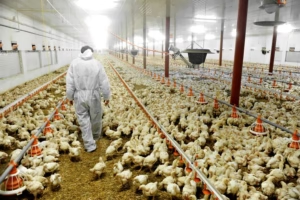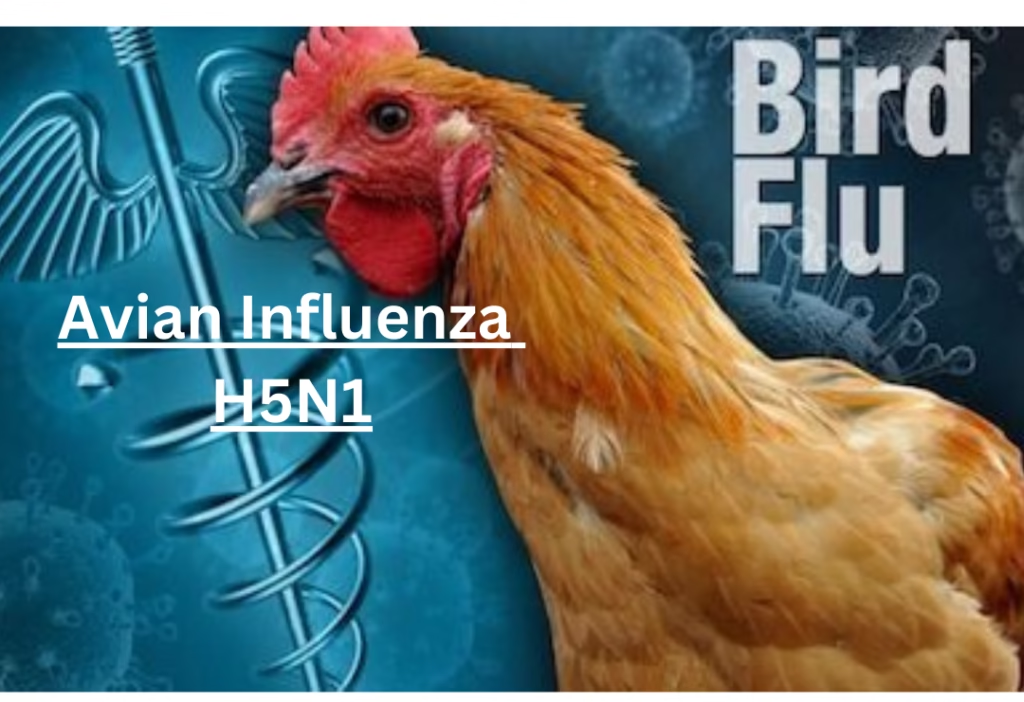The time of global pandemic was marked with widespread fear and panic, and the immediate cause behind it was the bird flu (avian influenza) that had every risk of transforming into a major outbreak if not tackled with the utmost care. During that time, in particular and even otherwise, it became imperative for us to dig deep and understand the risks, factors and the dynamics surrounding bird flu on the international scale. Let’s take a look at the matter at hand in our todays piece.
What is Bird Flu (Avian Influenza) ?
Bird flu is a viral infection that primarily attacks birds, but it also has the potential of spreading to the mammals and humans. The breaking point where the infection can potentially spread to a large number of people rests with avian influenza strains H5N1 and H7N9. They are of utmost concern due to their high pathogenic potential.
How Does Bird Flu Spread?
Similar to many other viruses, bird flu attaches itself onto an infected person and then spreads via biosecurity breaches, dirty equipment and surfaces or by simply spending a long time amidst infected poultry.
A virus. It can be transmitted through a number of ways, including:
- Close contact: Close contact with sick birds, such as those on farms or in coops, is the most common way for humans to catch bird flu.
- Contaminated surfaces: Touching of surfaces that have been contaminated with bird droppings or other secretions.
- Migratory birds: Wild birds can carry the virus and spread it from region to region.
- International trade: Live poultry can be traded internationally, spreading the virus.
- Undercooked poultry: Eating raw, undercooked, or partially cooked poultry products, such as eggs or chickens.
- Raw dairy: In places where bird flu has spread to dairy cows, raw dairy products may be contaminated.
Symptoms in Humans
Common symptoms that start appearing post infection include:
- High muscular respiratory activity
- Fever
- Sore throat
- Cough
A final consequence of the infection can be pneumonia, organ failure, respiratory distress or even death. Thus, a proper diagnosis will go a long way in patient treatment and recovery. Provide appropriate guidance regarding patient care post diagnosis.
How to stop avian influenza from spreading?
It is really hard to restore the normal health of economies whose livestock has been infected with bird flu viruses because the whole herd cannot be relied upon on eradication efforts. So a better option would be preventing it from ever occurring. There are some ways we can prevent this from spreading
- Biosecurity in Poultry Farms: Departments of health and agriculture have to ensure close care this disease. bio – security measures may be implemented in regulating bird farms. Biosecurity consists of practices aimed at keeping birds free from infectious disease-causing organisms such as viruses, bacteria, and parasites. When it comes to the commercial poultry industry, avoiding ‘complete’ farms removing as much as is possible outside intervention, enforcing the extra steps to keep flocks healthy such as showering before entering the farm, wearing specific clothes, and disinfecting hands before entering the area.

- Avoiding Contact with Infected Birds: People may be more receptive in reducing the interaction and contacts with these birds, doing so through the elimination of their habitats such as high risk areas or places where these species are bred.If deemed necessary, they should be kept at large distance while being indoors at a certain part of the day, like bathing etc. Dress properly when going out, ensuring to wear gloves at all times.
- Personal Protection: Strain the economy with overarching measures that assist broad vaccination coverage in certain countries to carry out extensive development of poultry.
- Community Engagement: The role of community is pivotal when dispensing rural outreach on bird flu prevention and resources. Having invested and targeted prevention campaigns aimed at counteracting bird flu attempts to do so upon occurrence of the viral outbreak. Such plans should be accompanied with information banning the public from contact with sick or dead animals not even birds nor should they countries where it is known that bird flu exists due to the weight amount of trade that such countries engage in.
The best prevention is to avoid sources of exposure. For instance, to help lessen the risk of bird flu virus infection. It is recommended that people observe hand hygiene, which, if possible, includes washing ones hand with soap and fresh running water or alcohol-based hand sanitisers as many times as possible,
Risks and Global Effects of Bird flu :

The avian influenza virus or ‘bird flu’ is an emerging threat that can easily transcend its boundaries because of its worrisome capacity to spread from one individual to another. Faced with such installments, the fear of a pandemic is of concern. They also have serious implications on the poultry industry and entail economic as well as food security woes.
To avert such sinister events, a concerted approach is required; Governments, health bodies, and people in general are tasked with the prevention of such viruses. Some of the basic strategies that need to be implemented are:
Available Therapies for treatment :
Oseltamivir (Tamiflu), an antiviral drug, is highly depended on for treating bird flu in human beings. The poultry sector has vaccines against the disease; however, amplifying global vaccination strategy for bird flu in individuals is heavily needed.
Conclusion:
Once more, it’s clear that bird flu is a threat to animal and human health alike. By identifying its origins, acknowledging its signs and symptoms, and taking appropriate measures, we can lessen its effects. International health programs, as well as international cooperation are crucial factors that



